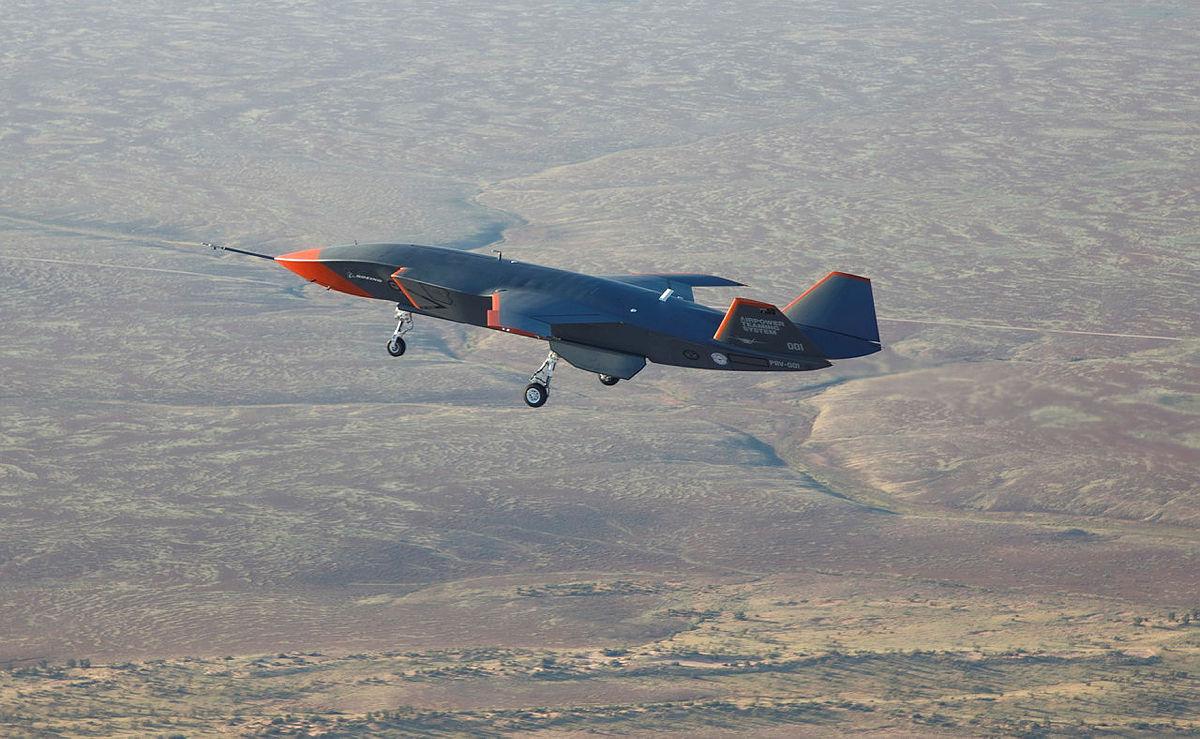
With the first flight of the Airpower Teaming System under its belt, Boeing Australia is producing more of the unmanned aircraft for the Royal Australian Air Force’s Loyal Wingman demonstration program, the U.S. Force’s Skyborg autonomy initiative, and other customers.
The turbofan-powered Airpower Teaming System (ATS) made its autonomous first flight from Woomera Range in South Australia on Feb. 27, three years after the concept was unveiled. The second aircraft is complete and in ground testing in Australia, according to ATS program director Shane Arnott.
These aircraft are in an initial batch of three being built with A$40 million ($31 million) in funding support from the Australian Defense Department under Phase 1 of the DEF 6014 Loyal Wingman program. With completion of the first flight, Australia has awarded Boeing an extra A$115 million for three more aircraft for teaming flight tests planned under the next three-year phase of the program.
To these six ATS for the Royal Australian Air Force (RAAF) have been added an unspecified number of aircraft ordered from Boeing by the U.S. Air Force Research Laboratory for the Skyborg program to develop a core autonomy capability that is transferable across a family of unmanned aircraft.
The 2,000-nm-range ATS is being developed by Boeing to address requirements across its global defense customers. In addition to the RAAF and USAF aircraft, Boeing is building “some others,” Arnott said. “This is not built like a typical prototype…there is a rolling [low rate] production line with a proper manufacturing system,” he added.
The 38-ft-long, 24-ft.-span ATS is designed to be modular, with a common core that can be customized to different customers’ requirements. A large part of that involves the mission nose, which can be removed and replaced to switch payloads—between customers or between missions.
The first ATS is fitted with a flight-test nose housing instrumentation, Arnott said, and will be used to validate the airframe, flight-control system and expand the flight envelope. But eventually all six RAAF aircraft will be fitted with the mission nose and be used for autonomous teaming flight tests. Boeing Australia is maturing the initial payload for the RAAF and will develop additional payloads under the next phase of the program, he said.
The next phase will also involve maturing the support system, he said, including how the aircraft will be based and its operators trained. The follow-on phase will also involve more complex flight testing as well as “working with the RAAF in classified digital trials against future threats,” Arnott said.
The RAAF and the Australian government are working with Boeing to facilitate export of the ATS, including to the U.S. “Additional aircraft have been brought to bear to support Skyborg,” Boeing senior director of autonomous aviation and technology Jerad Hayes said. These aircraft share the common core but have unique missionization including communications and sensors, he said.
Boeing would not say when the USAF aircraft will be delivered. “We are bringing a variant of the ATS forward to support the Skyborg,” Hayes said, adding: “It will be available in time to support Skyborg milestone events.”


